
e-Palette, vehicles that consider the mobility of all people, will be used to provide a loop-line bus transportation service for the Olympic and Paralympic villages at the Olympic and Paralympic Games Tokyo 2020. How is the e-Palette evolving now?

When President Akio Toyoda announced the transition of Toyota to a mobility company in January 2018, the e-Palette was also announced as a symbol of mobility that goes beyond cars to provide new value.
The actual vehicle debuted at the 2019 Tokyo Motor Show, and will be used to provide a loop-line bus transportation service for the Olympic and Paralympic villages at the Olympic and Paralympic Games Tokyo 2020 that were postponed to 2021. How is the e-Palette evolving now?
Toyota Times joined an online event held on December 22 and visited an autonomous driving demonstration site to find out.
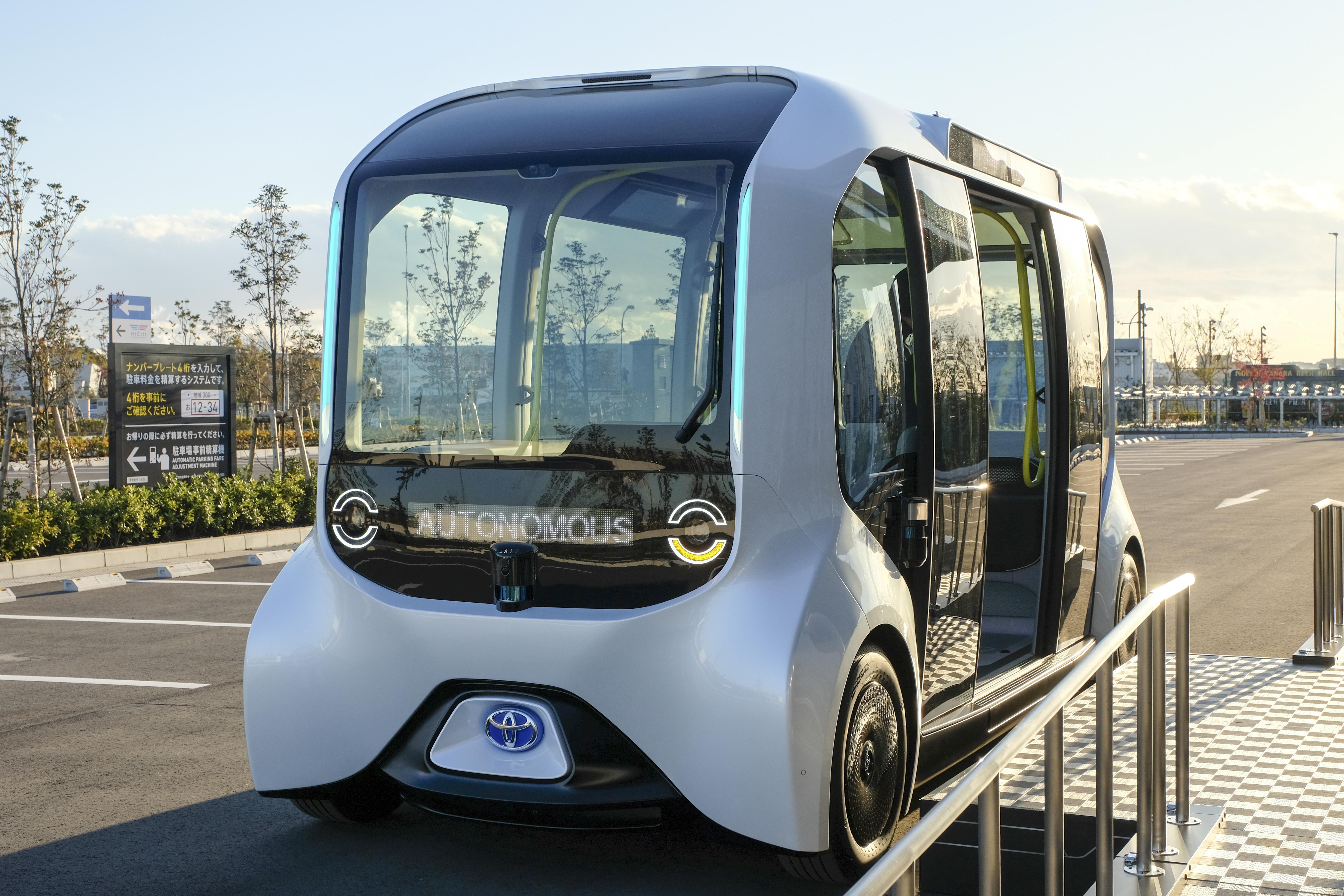
Vehicles that consider the mobility of all people
The e-Palette vehicle introduced this time was made for the Tokyo Olympic and Paralympic Games. It has big windows that makes the interior open, and seats a maximum of 20 people or 4 wheelchairs.
According to Toyota's development staff, under the concept of “Move” for All, the e-Palette aims to provide all people with freedom of movement that also moves their hearts. Specifically, given that the riders will be athletes competing in various events, the height of the seats and handrails at each location can be changed to make it easier for people of all heights to board, and the floor and interior are painted in contrasting colors to assist people with color vision deficiency.
In addition, to help riders stay focused throughout the journey, it features relaxing and calming lighting and plays no music.

Consideration is also given to COVID-19 prevention measures.
By opening the large door when the vehicle is stopped, more than half of the air inside the car is ventilated, and antiviral coatings and films are used on touchable surfaces.
During the development, in the spirit of “genchi genbutsu” (going to the source to get the facts), Toyota made continuous improvements by actually having tall basketball players and wheelchair users ride in the vehicle and provide realistic feedback.
When developers were asked what presented the biggest difficulties during the development, they smiled and said, “Everything.” No doubt the development of e-Palette is very innovative, and thus must have been full of challenges.

Toyota also focused on what must never be forgotten as a mobility: “Saki-aji (before taste)”, “Naka-aji (middle taste)” and “Ato-aji (after taste).”
This is a concept used by Master Driver Akio Toyoda when he tests cars. These words are used to express the feelings of excitement before driving a car (before taste), experiences while driving (middle taste), and then whether or not the experience was memorable enough to make you want to drive again (after taste).
The e-Palette, which is a driverless autonomous vehicle, was developed with the idea of putting “people at the center,” and making the riding experience as enjoyable as possible.
Operations management system that incorporates the Toyota Production System (TPS) concept
During the self-driving demonstration, multiple e-Palettes autonomously drove on a course with many curves and stops.
Each vehicle runs at equal intervals, and when they pass each other, the vehicle that comes later gives way. It's as if the vehicles are having a conversation with each other.
The editorial team members also took a test drive; the smooth acceleration and deceleration made it seem as if a veteran driver was at the wheel, driving smoothly and hugging the curves. It was amazing to see how autonomous driving, once thought to be a long way off, had evolved so much.
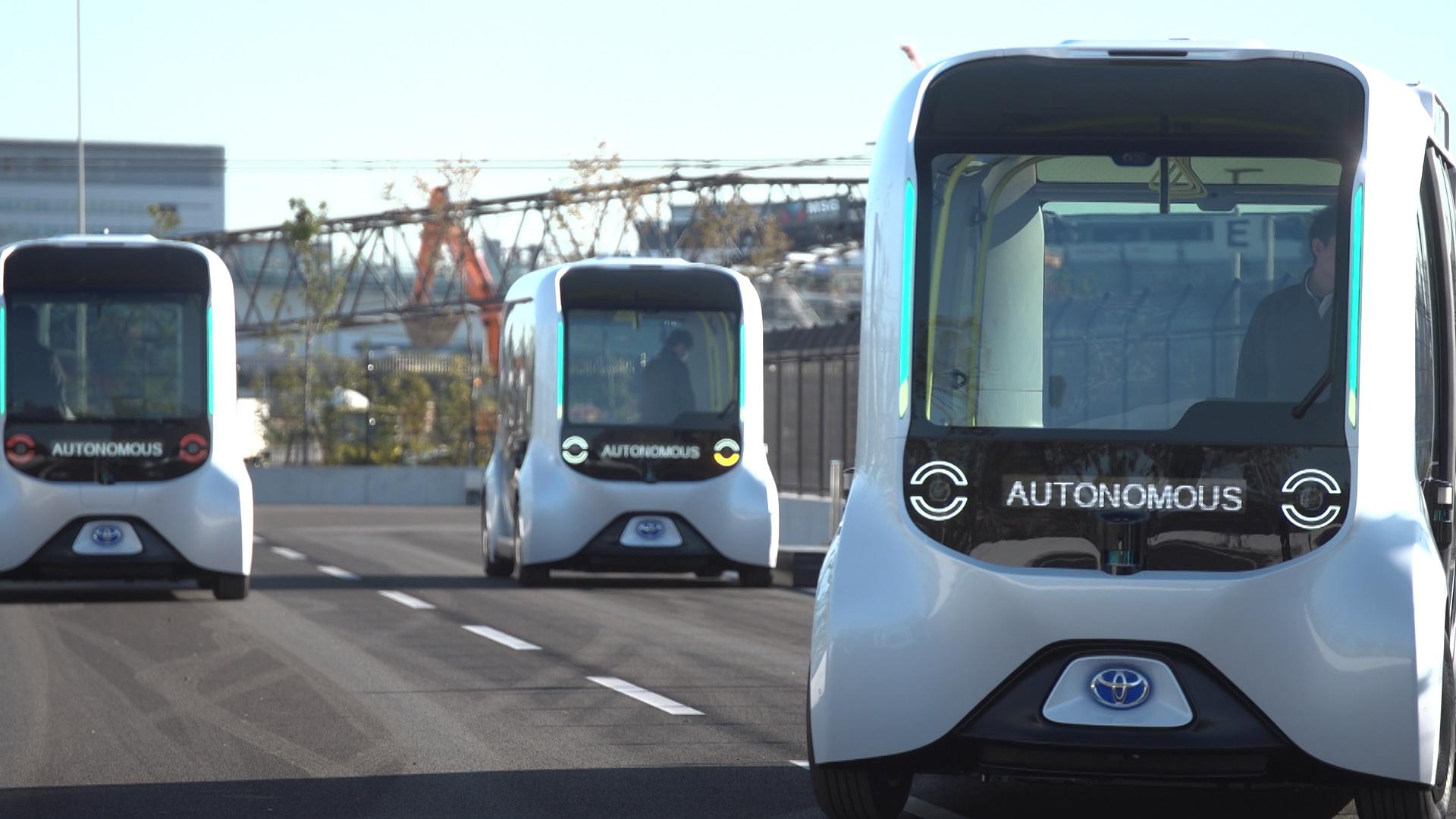
How are multiple vehicles controlled? When we heard the story, here too, Toyota's unique ideas came into play.
During these times characterized by a COVID-19 pandemic, a declining birthrate and an aging population, transportation must “go to where it is needed, when needed, and on time” and “provide the services and goods that are needed, when needed, and on time.”
In other words: Just-in-time mobility service. That's why a new operation control system was developed by incorporating the Toyota Production System (TPS) concept; namely the “Autonomous Mobility Management System (AMMS)” and the “e-Palette Task Assignment Platform (e-TAP).”
“AMMS” is a system to dispatch e-Palette vehicles when needed, where needed, and in the amount needed, to achieve the ultimate TPS-based just-in-time mobility service.
e-Palette operates based on prior planning, but if changes occur, such as when the number of people waiting at the bus stop increases, it modifies the schedule and automatically dispatches vehicles into service in real-time. This reduces waiting time and relieves congestion.
Vehicle abnormalities are also automatically detected and, if that happens, the vehicles are automatically returned to the depot and replacement vehicles are immediately dispatched on the route to ensure the stability of operation.
In an emergency, the vehicles can be stopped and returned to service remotely, with an extra level of safety management, to provide passengers with peace of mind.

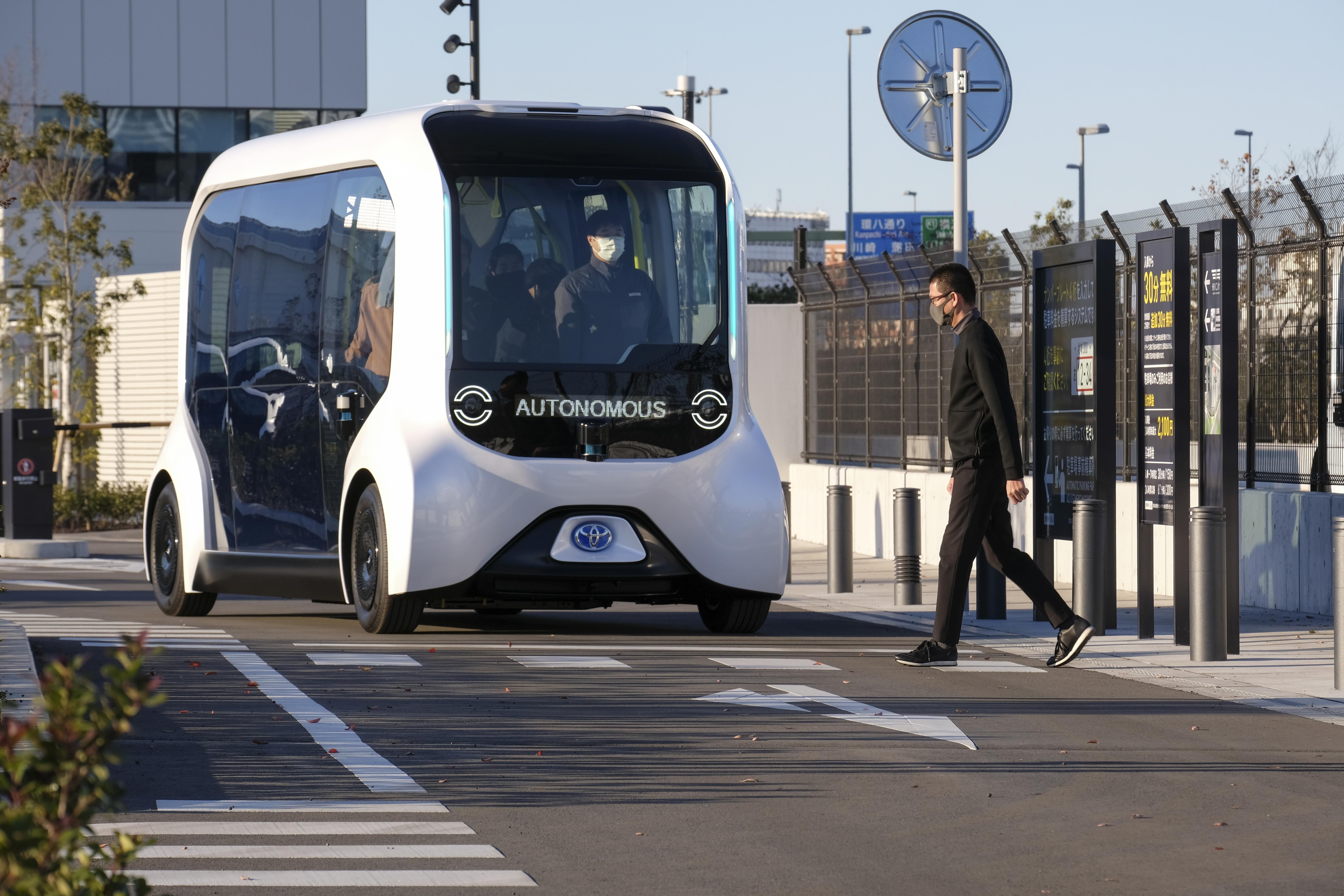
Then, the “e-TAP” system supports the operation staff.
Visual management was introduced in line with the “jidoka (automation with a human touch),” which Toyota has fostered through monozukuri.
Visualization of abnormalities in vehicles and workers enables a single person at the operation control center to manage several vehicles at once, and safe operation with a limited number of workers has become possible.
What happens when software engineers create cars?
Toyota is trying to change its way of developing cars and how they’re made toward the goal of achieving profound transformation, which the entire car industry is facing, the likes of which occur only once in a century.
Instead of putting a computer in an existing car (hardware), the software is designed first and the car is made around the computer system. That is the “software-first” concept, and what came about as a result of that idea is e-Palette.
Since the car can be updated continuously, the value provided to the customer can be constantly maximized.
Toyota's hardware had three areas of inherent strength: the outstanding durability of its products, excellent parts availability, and lastly, the great repairability of its products. By combining the speediness of its software and Toyota's inherent hardware strengths, e-Palette will quickly satisfy various market needs and customer expectations.
Evolvement of mobility that puts people at the center
The e-Palette will be refined and will grow with the never-finished, ever-growing living laboratory, Woven City, whose ground-breaking ceremony is planned to be held on February 23, 2021.
Toyota aims to commercialize the service in multiple areas and regions in the early 2020s, and evolve to provide safer, more secure, and more comfortable services while learning by operating in realistic environments where people live.
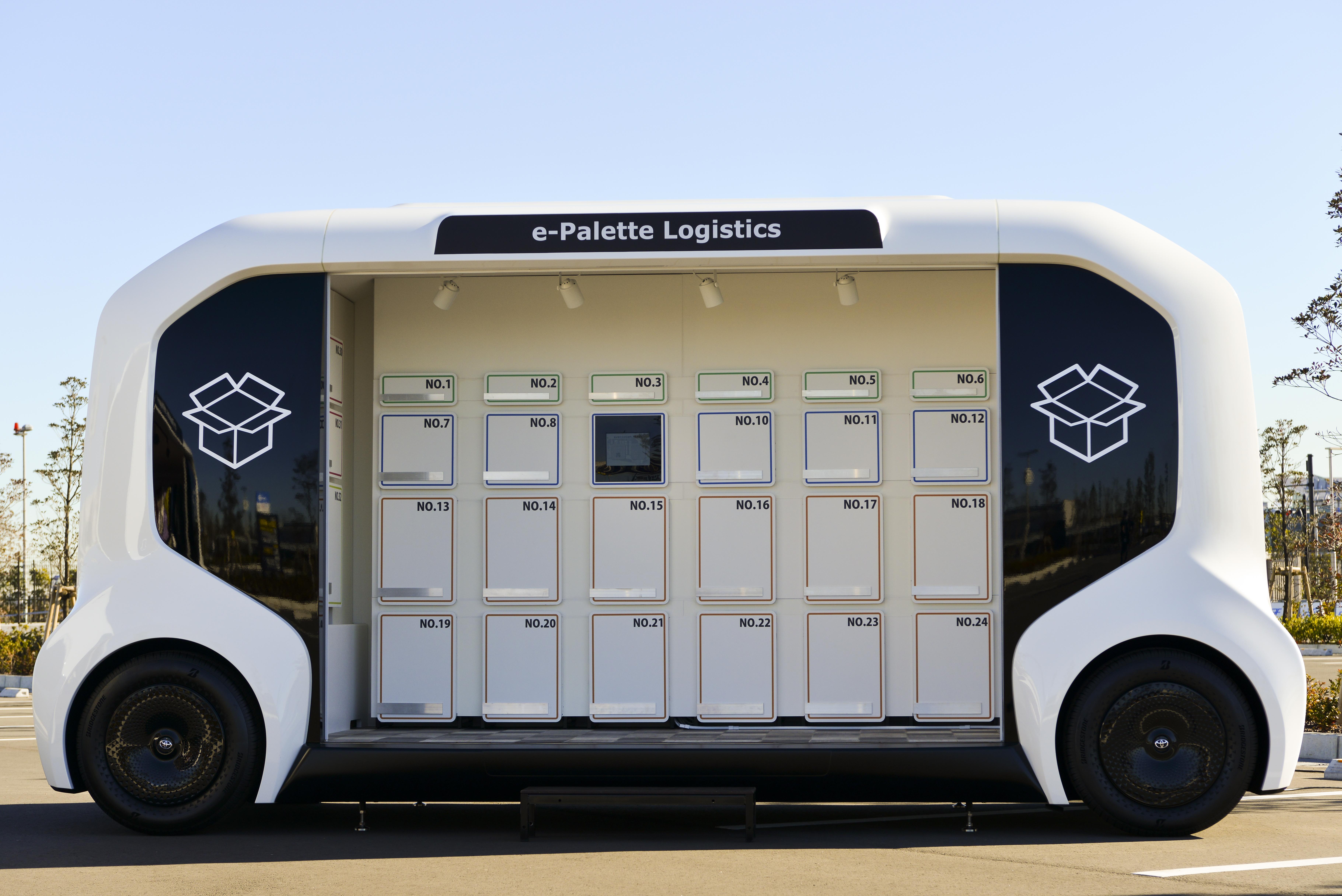
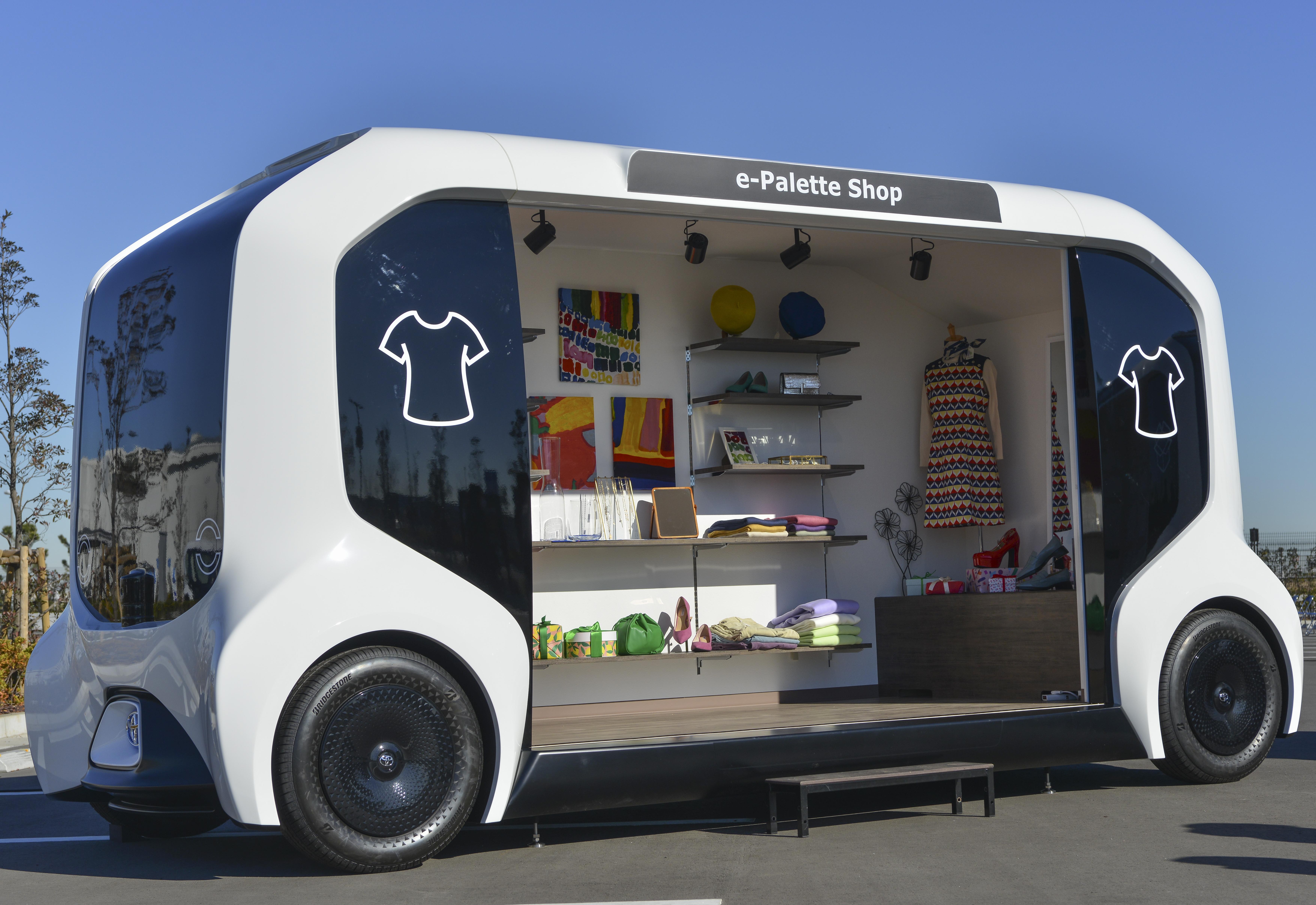
“When various kinds of information data are linked, we need to become more centered on people. Let's create a people connected society in which the warmth and kindness of people can be felt,” says Akio.
With these words in mind, the members of the development team will continue to open up new possibilities for mobility that will be useful to society, and lead to achieve the Sustainable Development Goals (SDGs).

